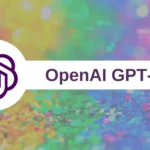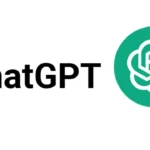Natural language processing (NLP) and artificial intelligence (AI) are two rapidly evolving fields that have shown tremendous progress in recent years. One of the biggest breakthroughs in this area is the introduction of GPT-3 (Generative Pre-trained Transformer 3), a state-of-the-art language generation model developed by OpenAI.
GPT-3 is a deep learning model that has been trained on a massive corpus of text data, making it capable of generating human-like text that can be used for a wide range of applications, from chatbots to language translation and beyond. Its ability to understand and generate text has made it a game-changer for the AI and NLP communities.
In this article, we will take a closer look at GPT-3 and its impact on language generation. We will explore its applications, advancements, and limitations and consider the future prospects of this technology. With GPT-3 and similar models becoming more prevalent, it is important to understand their capabilities and limitations to fully grasp their potential impact on the world.
Read Also: GPT-4 Who? Gemini AI is the New AI Rockstar!
Overview of GPT-3
GPT-3 is a deep learning model developed by OpenAI that has been trained on a massive corpus of text data. It’s part of the Transformer family of models, which have revolutionized the field of NLP in recent years.
GPT-3 stands out from previous language models in its size and capability. It’s trained on a dataset of over 570GB of text, making it one of the largest models of its kind. This, in combination with its sophisticated architecture, allows it to generate human-like text that is difficult to distinguish from text written by a real person.
One of the key features of GPT-3 is its ability to generate text across a wide range of styles and genres, making it highly versatile. For example, it can generate everything from poetry to news articles, and it can even write code in a variety of programming languages.
Read Also: Google Bard vs ChatGPT: Which AI Chatbot is Better?
While GPT-3 is undoubtedly impressive, it’s still just a machine learning model and not a true AI. It can generate text based on patterns it has seen in its training data, but it doesn’t have a real understanding of the world or the ability to reason. Despite this, GPT-3 is changing the game for the AI and NLP communities and is likely to have a significant impact in the years to come.
Applications of GPT-3 in AI and NLP
GPT-3 has a wide range of potential applications in AI and NLP thanks to its ability to generate human-like text. Some of the most exciting and practical applications include:
- Chatbots: GPT-3 can be used to build chatbots that can have natural, human-like conversations with users. This opens up the possibility of automating customer service and support, freeing up human agents to focus on more complex tasks.
- Content creation: GPT-3 can be used to generate all sorts of content, from articles and stories to poetry and songs. This can save time and effort for content creators or allow businesses to quickly generate marketing materials.
- Translation: GPT-3 has the potential to be used for language translation, as it’s capable of understanding and generating text in multiple languages.
- Code generation: GPT-3 can write code in a variety of programming languages, which could make it easier for developers to prototype new ideas or automate routine tasks.
- Question answering: GPT-3 can answer questions by generating text based on the patterns it’s seen in its training data. This opens up the possibility of building intelligent systems that can answer questions on a wide range of topics.
Read It: ChatGPT and Google BARD: Redefining Human-Machine Interaction in the Digital Age
These are just a few examples of the many potential applications of GPT-3 in AI and NLP. As the model continues to be improved and more widely used, it’s likely that new and exciting use cases will emerge.
Advancements in Language Generation with GPT-3
GPT-3 represents a significant advancement in language generation, bringing us closer to the goal of creating machines that can produce human-like text. Some of the key advancements made possible by GPT-3 include:
- Scale: GPT-3 is one of the largest language models ever created, with over 570GB of training data. This site makes it possible for the model to generate text that is more sophisticated and convincing than previous models.
- Versatility: GPT-3 has been trained on a wide range of text styles and genres, making it highly versatile. This allows it to generate text for a wide range of applications, from poetry to news articles.
- Quality: The text generated by GPT-3 is often difficult to distinguish from text written by a real person. This is a major leap forward in language generation, as previous models often produced a text that was clearly machine-generated.
- Efficiency: GPT-3 is highly efficient, allowing it to generate text quickly and at scale. This opens up the possibility of building large-scale applications that use language generation, such as chatbots and translation systems.
- Ease of use: GPT-3 is designed to be easy to use, with a simple API that allows developers to quickly and easily integrate it into their applications.
These advancements in language generation with GPT-3 are helping to bring us closer to the goal of creating machines that can understand and generate human-like text. While there is still work to be done, GPT-3 represents a major step forward in this direction.
Challenges and Limitations of GPT-3
While GPT-3 is an impressive model with a wide range of potential applications, it’s not without its challenges and limitations. Some of the most significant include:
- Bias: GPT-3, like all language models, is trained on a biased dataset of text that reflects the biases of the culture that produced it. This means that the text generated by GPT-3 can be biased and reflect harmful stereotypes.
- Lack of understanding: GPT-3 is a machine learning model that generates text based on patterns it’s seen in its training data. It doesn’t have a real understanding of the world or the ability to reason. This means that the text it generates can be inaccurate or nonsensical, especially when dealing with more complex topics.
- Cost: GPT-3 is a resource-intensive model that requires significant computational power to run. This makes it expensive to use and out of reach for many individuals and small businesses.
- Ethics: The use of GPT-3 raises important ethical questions about the role of AI in our society, such as the impact on jobs and the potential for AI-generated content to spread misinformation.
Must Read It: What is Chat GPT and how will help in SEO
These challenges and limitations need to be addressed as GPT-3 continues to be developed and widely used. Addressing these issues will require collaboration between researchers, policymakers, and businesses to ensure that the benefits of language generation are realized while minimizing its risks and negative impacts.
Errors in ChatGPT
ChatGPT, like any artificial intelligence system, is not immune to errors. In case of body stream errors, it can occur when the input provided to the model is incorrect or unclear, leading to misinterpretation or output that is not relevant to the intended topic. These errors can be due to various factors, such as incorrect data, model limitations, or biased data. It’s important to recognize that ChatGPT is still an AI model and should be used with caution and validated before being used for important decisions. It’s also crucial to continue working towards improving the model’s accuracy and reducing errors in its output.
Future Prospects of GPT-3 in Language Generation
The future prospects of GPT-3 in language generation look promising. The ability of GPT-3 to generate high-quality text in a wide range of styles and formats has already had a significant impact on many industries, including marketing, journalism, and customer service.Going forward, we can expect to see continued improvements in the accuracy and versatility of GPT-3. This will likely lead to even more widespread adoption and integration into a variety of applications and platforms.
However, it’s important to remember that GPT-3 is still an artificial intelligence system and has limitations. It is not perfect and can make mistakes or generate text that is inappropriate or offensive. As a result, it’s crucial that the technology is used responsibly and ethically and that efforts are made to continue improving its capabilities.
Conclusion
The conclusion of the article is that GPT-3 has a promising future in language generation and has already had a significant impact on various industries. The accuracy and versatility of the technology are expected to continue to improve, leading to widespread adoption and integration into various applications and platforms. However, it’s important to use the technology responsibly and ethically and to continue making efforts to improve its capabilities. GPT-3 is a powerful tool with the potential to revolutionize communication and text generation, and the future holds exciting possibilities for this technology.


